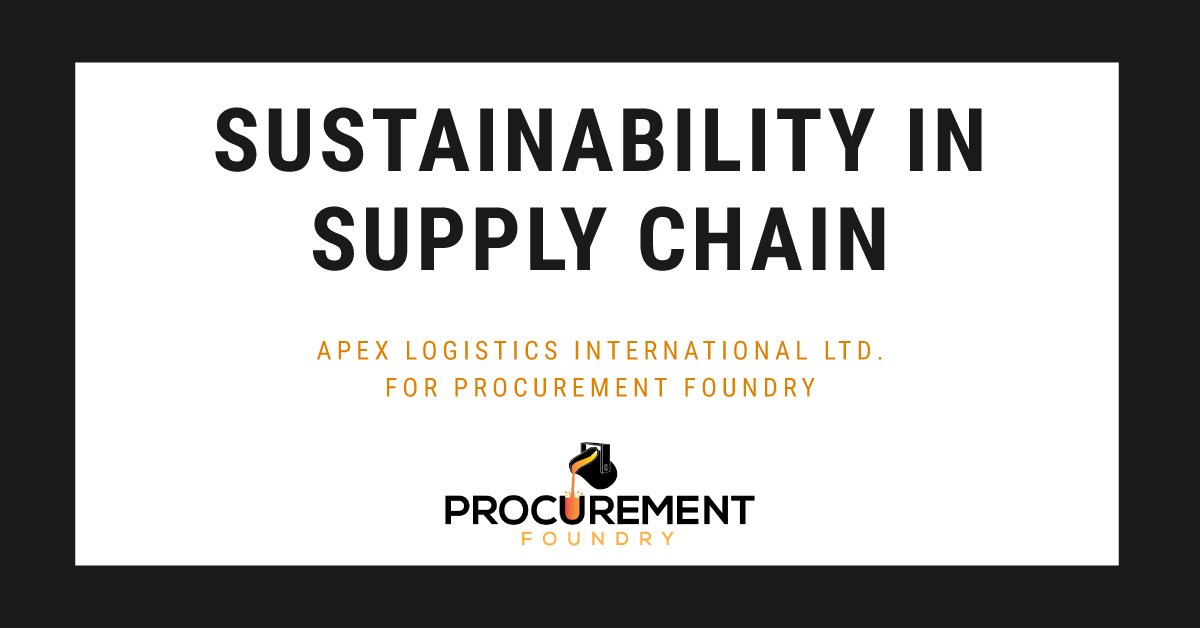Maximizing Savings Opportunities and Procurement's Strategic Value for CPOs
Saving money is not always about pinching pennies: advanced and data-driven insights enable you to identify real cost-saving opportunities, negotiate...

For decades, environmentalist groups and NGOs have been pushing the notion of sustainability. And for a long time, multinational corporations and the thousands of organizations that make up their global supply chain networks have been hesitant to commit to any particular drastic change. Why? Because, in the past, it would have hindered profit in a big way. But, in recent years, consumer demand for sustainably sourced goods and services has forced executives to look at sustainability differently—a solution rather than a hindrance.
This mental shift in the business world has been long-awaited. These days, more and more companies have started to extend their commitment to responsible business practices across their entire value chains—all the way from subsidiaries and third-party logistics providers to manufacturers and suppliers. The key driver behind this shift, aside from consumer demand, sits firmly at the feet of the many rewards that supply chain sustainability initiatives can offer companies.
These days, ESG-compliant supply chain management initiatives can be a massive driver of both value and success for organizations and the consumers or societal elements that depend on the capital they command. But something that companies slightly behind the trend—usually small and medium-sized enterprises (SMEs)—tend to wonder is, “what are the key elements that industry-leading companies use to ensure sustainability across the globally interconnected supply chain networks?”
Today, we thought we’d give a bit of insight into what we, at Apex Logistics International Inc. think companies should focus on.
As you undoubtedly already know, greenhouse gas (GHG) emissions are a major contributor to the current climate crisis that organizations, institutions, and governments are attempting to combat. Here at Apex Logistics, we’ve learned a thing or two about reducing greenhouse gas (GHG) emissions through our membership with BSR, Sustainable Air Freight Alliance (SAFA), and our own research into the matter.
Just like BSR, at Apex, we are committed to the concept of building a “just and sustainable world,” and we’ve found that by reducing our GHG emissions through Scopes one to three, we’re actively working to decrease air pollution and slow global climate change.
“How do we do that?” By analyzing the effects of our internal operations, and, more importantly, by looking at our external supply chain, and investing in the tools that can help suppliers, manufacturers, and 3PLs adopt better best practices and reduce their impact on the environment.
Technology is, without a doubt, the driving factor in the majority of developments today. Through technology, we, and you, can analyze, measure, and optimize processes. These range from inventory management to accurately predicting stock demand to ensuring that logistics vehicles find the most efficient route, so they spend less time “on the road,” polluting the skies.
Companies now offer third-party supplier sustainability assessments and platforms that continuously rate the ESG-compliance of individual suppliers—much like our personal credit scores, but for globally recognized organizations.
One of the biggest considerations when it comes to sustainability and appeasing the masses revolves around transparency. In the past, businesses could covertly push through their agendas without any sort of public consultation or, before the Internet era, without any widespread knowledge of their actions, which means that they didn’t necessarily have to share the particulars of their supply chain operations.
Consequently, people just didn’t know the damage that international freight haulage and shipping was doing to the environment. Nowadays, though, they do. As a result, companies are expected to be transparent so consumers can comprehend the journey that their purchase has made from its beginning as a natural resource to its arrival at the front door.
When it comes to striving for more sustainable norms and values within our business operations and across supply chains, organizations need to ensure that all elements of their value chain are united in their intention to match global initiatives and expectations in the fight against environmental damage. If your company can ensure that its associates and collaborators are aligned, implementing technology that accurately analyzes their global impact while maintaining transparent communication—you’re on the route to improving our world for a better tomorrow.

Saving money is not always about pinching pennies: advanced and data-driven insights enable you to identify real cost-saving opportunities, negotiate...

The topic of our recent roundtable discussion with a dozen Procurement Foundry community members—exploring potential flaws in procurement incentive...

Every 30 days or so, I get the same alert on my phone—“Your electricity bill is available for viewing.” I take a quick look, make sure nothing seems...